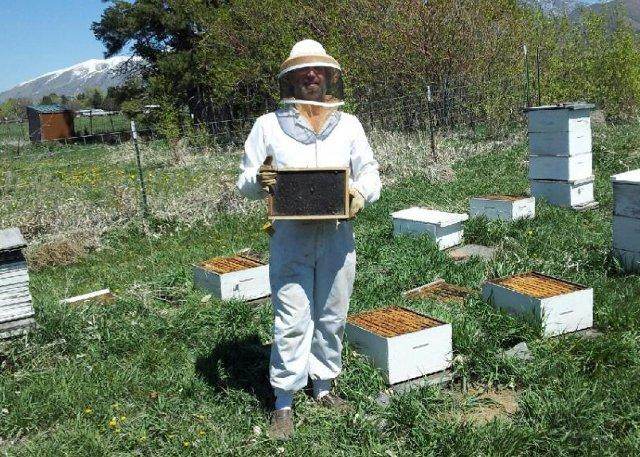

 6
6




Chasing that dream and enjoying every minute of it!
(Usually)
 3
3




















Chasing that dream and enjoying every minute of it!
(Usually)





Living in Anjou , France,
For the many not for the few
http://www.permies.com/t/80/31583/projects/Permie-Pennies-France#330873




Moderator, Treatment Free Beekeepers group on Facebook.
https://www.facebook.com/groups/treatmentfreebeekeepers/





 2
2




















David Livingston wrote:budlia
not only will your garden and bees benifit but it will spread to your neighbours weather they want it or not
Chasing that dream and enjoying every minute of it!
(Usually)




Moderator, Treatment Free Beekeepers group on Facebook.
https://www.facebook.com/groups/treatmentfreebeekeepers/





















Chasing that dream and enjoying every minute of it!
(Usually)
 2
2








Moderator, Treatment Free Beekeepers group on Facebook.
https://www.facebook.com/groups/treatmentfreebeekeepers/





















Becky Proske wrote:Marty, I love your introduction to this thread.
This gives me an opportunity to comment on Hairy Mountain Mint (Pycnanthemum pilosum) which is advertised as the best pollinator plant to have from nurseries in my area. From my observations I would beg to differ about this claim, and since I live outside the native range of this plant, I would be reluctant to recommend it to my neighbors. I will admit that I've only grown hairy mountain mint for one season, maybe in time, as the plant matures and gets larger, it will attract swarms of pollinating insects like they say. We'll see. In my experience at my location I've seen more pollinator activity around other plants and would recommend them instead. This is a short list of plants that have displayed such high activity repeatedly over the years in my yard.
Anise Hyssop (Agastache foeniculum)
Borage
Cilantro
Apples
Apricots
Pussy Willow
(And to see a number of yellow swallowtail butterflies on a rose milkweed in bloom is also a fine sight to behold.)
Chasing that dream and enjoying every minute of it!
(Usually)
















Michael Cox wrote:Hazel - I think for early pollen rather than nectar. But I think they work it because it is all that is around at that time, rather than it being especially good in absolute terms.
Chasing that dream and enjoying every minute of it!
(Usually)




Marty Mitchell wrote:
Thanks Becky!
If you name which bees you see in each plant... I will add them to the first post/list unless already there.
Do you folks think I should add butterflies to the list? I do care about those as well. They are few and far between in my parts these days. (except for the massive amounts of cabbage loopers! lol)
















Becky Proske wrote:
Do butterflies and humming birds play a part in pollination? They certainly are just as entertaining to watch as a cloud of hoverflies surfing the breeze around a cilantro plant in bloom.
Chasing that dream and enjoying every minute of it!
(Usually)

 2
2























Joseph Lofthouse wrote:
p.s. I'd really like to know what cultivar of tomato is attracting leaf-cutter bees. I'm not committed to bumblebees only. I'll select tomato flowers that attract any pollinator: Especially a pollinator like leaf-cutter bees that might be easy to cultivate.
Chasing that dream and enjoying every minute of it!
(Usually)




Living in Anjou , France,
For the many not for the few
http://www.permies.com/t/80/31583/projects/Permie-Pennies-France#330873





















Joseph Lofthouse wrote:
My breeding goal for tomatoes is to eventually get a population of promiscuously pollinating tomatoes. That will allow me to grow lots of naturally occurring hybrids, and to avoid inbreeding depression, and to play the genetic lottery much more frequently and easily which aught to lead to higher production and better local-adaptation. It all started when I noticed two plants in my garden (out of hundreds) thatwere highly attractive to bumblebees.
Chasing that dream and enjoying every minute of it!
(Usually)
 2
2









 2
2









Owner, Etta Place Cider





















Chasing that dream and enjoying every minute of it!
(Usually)
















Jay Grace wrote:Linden/ basswood tree
Privet
Chasing that dream and enjoying every minute of it!
(Usually)
















Russell Olson wrote:Monarda(bee balm) and coneflowers rule in my yard.
I have a variety of mint I got from oikos they call applemint that absolutely brings in all sorts of strange swarms of wasps, bees, and flies.
I missed my opportunity to post a picture of them last year but I get 3 inch long florescent blue and black wasps covering that mint when it blooms.
















Chasing that dream and enjoying every minute of it!
(Usually)
















Chasing that dream and enjoying every minute of it!
(Usually)
















Chasing that dream and enjoying every minute of it!
(Usually)
















Chasing that dream and enjoying every minute of it!
(Usually)





Marty Mitchell wrote:Does anyone out there know what kind of flower the pink one in the middle is?
















Joseph Lofthouse wrote:
Marty Mitchell wrote:Does anyone out there know what kind of flower the pink one in the middle is?
Does it have a square stem? If yes, that would put it into the mint family...
Chasing that dream and enjoying every minute of it!
(Usually)
 2
2




 Red dogwood (sanguinea). Oilseed rape. Crimson clover. Industrial hemp. Linden and sweet chestnut.
Red dogwood (sanguinea). Oilseed rape. Crimson clover. Industrial hemp. Linden and sweet chestnut.
-- Wisdsom pursues me but I run faster.












 1
1




Crt Jakhel wrote:Looks a bit like monarda citriodora.
Chasing that dream and enjoying every minute of it!
(Usually)




Crt Jakhel wrote:Further out from the house: black locust... accept no substitutes
Red dogwood (sanguinea). Oilseed rape. Crimson clover. Industrial hemp. Linden and sweet chestnut.

-- Wisdsom pursues me but I run faster.
















Chasing that dream and enjoying every minute of it!
(Usually)





















Chasing that dream and enjoying every minute of it!
(Usually)

|
Aaaaaand ... we're on the march. Stylin. Get with it tiny ad.
Learn Permaculture through a little hard work
https://wheaton-labs.com/bootcamp
|






